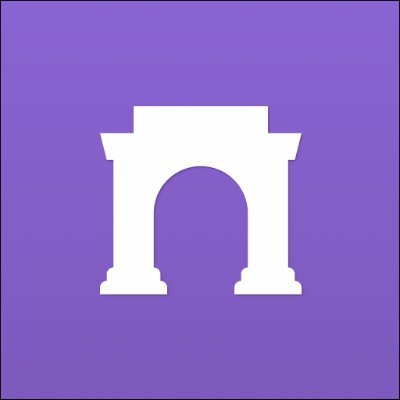Outlier Ventures: The Rise of Decentralized Social Media
Original Title: The Rise of Decentralized Social Networks
Original Author: Lorenzo Sicilia, Engineering Lead at Outlier Ventures
Translated by: xiaozou, Jinse Finance
Outlier Ventures has noticed the healthy development of several decentralized social networks, with Farcaster and Lens Protocol beginning to gain genuine user attention. When it comes to products aimed at the mass market, crypto technology is becoming increasingly practical and efficient. The lack of private key management and mobile-first experiences has long hindered people's adoption of crypto.
In this article, we will delve into several major crypto decentralized social media competitors, their respective features, architectures, and discuss the opportunities that Web3 founders are excited about in building new permissionless social graph protocols.
1. Social Networks
After over a decade of using Instagram, Facebook, Twitter, and other platforms, everyone knows how social networks operate. The concept of social networks is user-centric, where users provide their preferences to the system by filling out profiles and choosing accounts they want to follow, and in return, they receive a real-time generated customized information feed.
Around this simple concept, social networks have built their empires, with the ultimate goal of capturing users' attention and keeping them in the high-walled gardens of social networks for as long as possible. Users' data is valuable, and this data, in turn, becomes a commodity.
Decentralized social networks aim to break down these barriers, achieving user identity portability, allowing users to have more control over their preferences/privacy, and making it easier to switch between platforms.
Just as cryptocurrencies can bring permissionless transactions to anyone, anywhere in the world, DeSo (Decentralized Social) brings permissionless communication and uncensorable broadcasting capabilities.
However, what is truly compelling is that DeSo is also permissionless for builders, allowing developers to innovate on top of existing protocols without needing any gatekeeper's permission. The successful paradigm of "DeFi Lego" can be repeated here.
Before the emergence of Web3-based DeSo, the only attempt at decentralized social was Mastodon. After Elon Musk acquired Twitter, Mastodon seemed poised to capitalize on this advantage, but ultimately its usability issues and fragmented user experience led to its growth stagnating at 1 million daily active users.

Today, Farcaster, Lens, and other projects are attempting a different approach to building based on Web3 primitives, bringing something new.
2. SocialFi
SocialFi adds Web3 primitives to decentralized finance on social graph networks. The participants include content creators, influencers, and end-users who wish to have better control over their data and freedom of speech, and be able to profit from social media engagement and stickiness.
Monetization methods are based on cryptocurrencies, while identity management is handled by a set of private keys. Most of them indicate that they can leverage decentralized autonomous organizations (DAOs) to resist censorship. However, there is still no definitive conclusion.
Let's look at the main differences it has with other social networks:
- Token-gated areas: Only token holders of creators can access certain features or areas.
- Tips: People can receive tips in the form of cryptocurrencies, which can be platform tokens or other tokens.
- One-time subscriptions or recurring subscriptions: Crypto payments for digital goods or services occur within the platform.
- Platform incentives: Users and creators can earn platform token incentives based on their engagement.
Although these concepts have existed for a long time, they only gained significant market attention after Friend Tech discovered the potential of token-gated chat. Users need tokens called "keys" (which can be traded) that allow them to benefit from the rising popularity of content creators.
Friend Tech had 800,000 unique address users at its peak, but subsequently, retention rates dropped significantly.

While bonding curves excel at driving adoption through creating urgency and FOMO, these curves have shortcomings in user retention in the long run. To truly maintain user stickiness, two key elements are needed: network effects that amplify platform value as more users join; and a clear long-term utility that provides tangible benefits beyond short-term gains.
3. Web3 Social Graphs
Social graphs can represent relationships between entities, such as people, organizations, places, and anything else that can be interconnected. Web2 entities like Facebook, Twitter, Instagram, and TikTok have accumulated significant network effects, particularly in preventing users from joining other social sites, as switching networks means starting over.
Lens, Farcaster, and other projects are building differentiation from this friction point, starting to develop a truly open graph with multiple frontends, providing different user experiences using the same data.
However, Facebook generates 4PB of data daily. It posts 510,000 comments, updates 293,000 statuses, receives 4 million likes, and uploads 136,000 photos every minute. No existing blockchain can handle such a large volume of data, and it may never be able to, as blockchains are optimized for different types of use cases: permissionless value exchange.
For example, double spending is a typical blockchain financial risk that is irrelevant in decentralized social networks handling usernames, content distribution, and notifications. The Lens and Farcaster teams should consider different assumptions under various trade-offs.
4. Lens Protocol
The Lens Protocol is a composable social graph created by Stani Kulechov, founder and CEO of Aave. The protocol is community-driven and currently deployed on Polygon.
The construction of Lens revolves around several key smart contracts that handle all aspects of social interaction.
- Profiles are represented by NFTs, which are the main objects in the protocol. If you own one of these NFTs, you control the social graph and content. Profiles contain the history of all Posts, Quotes, Mirrors, Comments, and all other user-generated content.
- Publications represent the content of the protocol and come in four types: Posts, Comments, Quotes, and Mirrors. Posts are the basic objects, while the others are extensions of the basic entity. Importantly, each publication has a ContentURI. Essentially, all content, except for the actual content (like images, text, etc.), resides on-chain, associated with decentralized storage solutions like IPFS or Arweave, or even AWS S3.
- Mirrors, Comments, and Quotes allow users to interact with publications through commenting, quoting, or propagating content. Therefore, all references to the original publication module follow the same rules (e.g., only followers can quote/comment/mirror).
- Open Actions provide developers with a way to build custom functionalities that can be directly embedded into the protocol. You can think of them as hooks triggered by the protocol whenever something happens (e.g., Alice sees that Bob tipped her, so she can have an indexer tracking her earnings).

From the beginning, the Lens team focused on the protocol itself and let the community handle front-end development, resulting in many different UIs, each with its own style.

The result of this approach is a vibrant ecosystem, albeit with some chaotic scenes, as many projects quickly disappeared after a few days. However, we are gradually seeing some projects consolidate, such as buttrfly, hey.xyz, and orb, which have gained some attention.
After running Lens v1 for a while, Lens launched Momoka, an Optimistic L3 that goes beyond the blockchain space. They do not directly store data on Polygon but utilize a data availability (DA) layer, reducing costs simply by uploading data to Arweave.

5. Farcaster
Farcaster is another Web3 social network built on Ethereum, leveraging on-chain smart contracts and a peer-to-peer network matrix based on "Hub" clients.
Similar to Lens, Farcaster is open and has spawned many various clients on its foundation, the most popular being Warpcast, developed by the Farcaster team itself, along with Supercast (with paid features) and Yup (focused on cross-posting).
In 2022, Varun Srinivasan published a blog post about "sufficient decentralization," which proposed some ideas that have since been central to Farcaster's architecture and approach.
The main idea is that if "two users on a social network can find each other and communicate across other obstacles on the network," then that social network is sufficiently decentralized.
To achieve this, it requires:
- Obtaining a unique username
- Posting messages under that username
- Reading messages from any valid name

Farcaster achieves its architecture through a set of core smart contracts deployed on Optimism:
- IdRegistry creates new accounts, allowing users to transfer and recover Farcaster accounts. It also integrates with ENS, allowing usernames to be claimed by legitimate owners.
- Storage Registry rents storage to accounts. Storage prices are denominated in USD and converted to ETH using an Oracle. Prices vary based on supply and demand.
- Key Registry publishes app keys for accounts so they can post messages on their behalf.
As you can see, the above smart contracts do not send or receive messages; this responsibility is delegated to Hubs. Hubs are a distributed network composed of Hubble instances, which are nodes built using Typescript and Rust.
Each node is responsible for validating, storing, replicating messages, and evaluating their peer nodes.
Message-level validation is done by verifying valid signatures from a user account key.
Once a message is validated, it is stored in the hub through an asynchronous process utilizing the CRRDT (Conflict-free Replicated Data Type) method.
Replication is achieved through diff sync and the gossip protocol based on the popular libp2p codebase. The Hub regularly selects a random node to perform diff sync, comparing message hash Merkle tries to find missed messages.
Hubs have a robust eventual consistency architecture, as they can rebuild state using their peer nodes even when they are offline.
Peer nodes are crucial for maintaining the state of the protocol, so they evaluate each other. If a node fails to receive valid information, falls behind, or gossips too much, it may be ignored.

6. Permissionless
From these protocols and principles, we see new primitives emerging. Among them, Farcaster's Frame has gained considerable attention.
Frame allows for a customized experience to be injected into the Farcaster information stream. It extends the Open Graph standard and transforms static images into interactive experiences by adding up to four buttons. When users press a button, they receive a new image based on button clicks and user metadata sent to the Frame generation server.
Building on this, we are starting to see many experiments, such as creating pools, digital collectibles, and mini-games deployed through these Frames.
Any application server capable of returning HTML content can create a Frame, but we have already seen a plethora of Frames, such as https://framesjs.org/, https://frog.fm/, and others that help developers streamline the process.

After Frames successfully launched on Farcaster, Lens is now also considering related aspects, indicating that having common standards can be a powerful driving force.
7. Conclusion
Decentralized social networks still face significant challenges before achieving complete success, including scaling their infrastructure to accommodate more users, simplifying the process for new users to create digital wallets, and abstracting gas fees as much as possible.
Despite these challenges, we see that Farcaster has made substantial progress in overall user experience, forming a sticky community around it (e.g., approximately 50,000 daily active users and about 350,000 registered users). A key factor contributing to these numbers is the availability of mobile apps, which need to be easy to install and provide a user experience similar to traditional social networks.
Another critical factor is the permissionless nature of protocols (e.g., Farcaster, Lens, etc.), which provides fertile ground for developers to innovate and build on top of existing blocks and functionalities.
Just like the summer of DeFi, we are witnessing a dynamic experimental environment (e.g., yup.io is a decentralized social network aggregator, drakula.app is a short video platform, or neynar.com is a SaaS tool based on Farcaster), all of which emerge from these protocols.
Founders can now start building a native Web3 distribution channel for their projects, allowing people to embark on their journeys through these projects, expanding from their initial points of interest to other applications or linked applications directly embedded in their information streams (e.g., through Frames). Meanwhile, applications that attract new users can serve as a distribution channel back to the rest of the decentralized social network, thus initiating a positive feedback loop.












